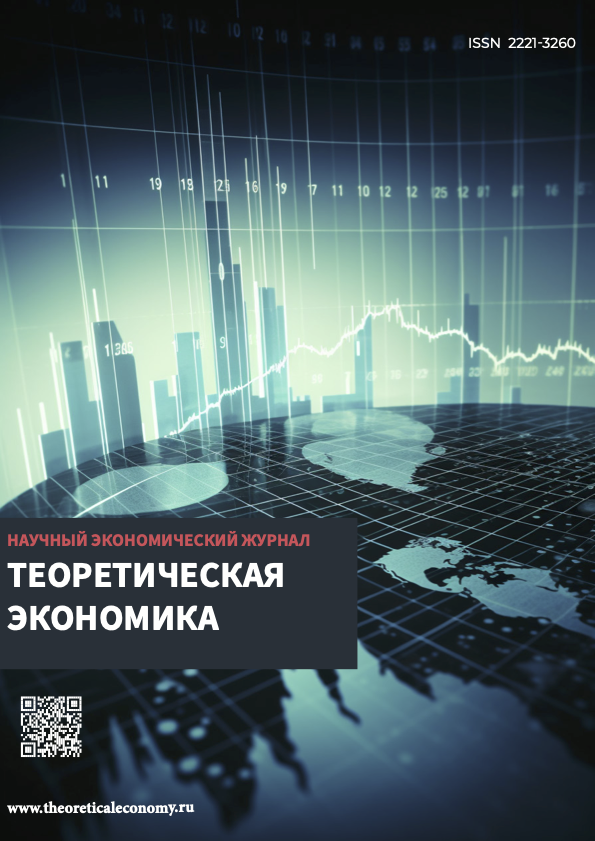Moscow, Moscow, Russian Federation
Business and the state spend significant resources on prevention and minimization of risks, compensation for damage. But resources are eventually withdrawn from the pockets of citizens, whose rights are often also infringed. This paper shows how the fight against risks and the desire to install order can result in great losses for the economy and the social sphere, that is, turn into a weapon of hybrid warfare. Using the Markowitz portfolio as an example, it is shown that reducing the risk of an asset portfolio (standard deviation from the expected return value) can lead to a significant decrease in the expected gain, and it is likely that the damage will exceed the critical value, i.e. a catastrophe. Socio-economic objects are described by vectors in a multidimensional space, the components of which are variables describing material and information assets and the rate of their change. A significant part of the cost is related to information and the speed of its processing. The maximum information in the system is achieved both in the presence of some randomness, because with an ideal order, entropy and information are reset to zero. The processes in the information space resemble the processes in the observed material world. When energy enters the atmosphere, energy-saturated objects arise in it: typhoons, tornadoes, lightning. When information and money enter the information virtual space, they are also concentrated in local objects: banks, mafias, government agencies. The laws of conservation of mass and energy do not apply there, information is not additive, so the scale of fluctuations of money in virtual space is much larger than in real production, and the risks are much higher. Examples are given of how the desire to prevent risk or compensate for it on an unscientific basis leads to huge losses: the end of the Rurik dynasty, the consequences of the Chernobyl accident, Gorbachev's fight against drunkenness, the increase in the number of guards and supervisors, “reforms” and digitalization in schools and universities.
. Risks, profitability, Markowitz portfolio, socio-economic systems, entropy, information.
1. GOST R 51897-2011/Rukovodstvo ISO 73:2009 Menedzhment riska. Terminy i opredeleniya. – M. : Standartinform. – 2012.
2. Bol'shakova L. V. Teoriya veroyatnostey dlya ekonomistov : uchebnoe posobie. – M. : Finansy i statistika. – 2009.
3. V. M. Kartvelishvili O. A. Sviridova. Risk-menedzhment. Metody ocenki riska. — M.: — FGBOU VO REU im. G. V. Plehanova. – 2017. – S. 9-17.
4. Brodeckiy G. L. Modelirovanie logisticheskih sistem. Optimal'nye resheniya v usloviyah riska. – M. : – Vershina. – 2006.
5. Krass M.S., Chuprynov B.P. Matematika dlya ekonomistov. – SPb, – Piter, 2009. – S. 251.
6. Stupakov V.S., Tokarenko G.S. Risk-menedzhment. – M., – Finansy i statistika, 2005. Dostupna http://www.alleng.ru/d/manag/man297.htm
7. Markowits H. M. Portfolio Selection // Journal of Finance. 1952. 7. № 1 pp. 71-91
8. Yu. F. Kasimov. Osnovy teorii optimal'nogo portfelya cennyh bumag — M., –Informacionno-izdatel'skiy dom «Filin'». – 1998. – 144 s. ISBN 5-89568-086-0
9. Beninga Sh. Finansovoe modelirovanie s ispol'zovaniem Excel. – 2-e izd.: per. s angl. – M. : ID Vil'yams, 2016, 178 c.
10. Burenin A. N. Upravlenie portfelem cennyh bumag. – M. : –NTO im. akademika S. I. Vavilova, 2008. 156 c.
11. Selischeva A.S. Lekcii po kursu «Teoriya cennyh bumag» .www.selishchev.com. Poslednee obnovlenie 08.03.2012 g.
12. Katargin N.V. Teoreticheskie osnovy i praktika byurokratizacii nauki i obrazovaniya v Rossii // Proizvodstvo, nauka i obrazovanie v Rossii (PNO- VI). Sbornik materialov VI Mezhdunarodnogo kongressa. Pod red. S.D.Bodrunova. SPb.: – INIR. – 2020. – S. 337.
13. Prangishvili I. V. Entropiynye i drugie sistemnye zakonomernosti. M.: Nauka – 2003. 14. Florya B. N. Ivan Groznyy. – M., – Molodaya gvardiya, 1999. – S. 56-67.
14. Malahovskiy V.N., Viktorov V.I., Savinkina L.P. Faktory, prepyatstvuyuschie stabilizacii zhizni naseleniya, i social'no-gigienicheskie meropriyatiya po reabilitacii territoriy, podvergshihsya radiacionnomu zagryazneniyu v rezul'tate Chernobyl'skoy avarii // V sbornike "Problemy smyagcheniya posledstviy Chernobyl'skoy katastrofy", chast' 1. pod. red. Aleksahin R.M. – Bryansk, 1993. – 158 s.
15. Arhangel'skaya G.V., Liberman A.N., Ivanov E.V., i dr. Social'no-psihologicheskie posledstviya avarii na ChAES i puti smyagcheniya ih vliyaniya na zdorov'e naseleniya // V sbornike "Problemy smyagcheniya posledstviy Chernobyl'skoy katastrofy", chast' 1. pod. red. Aleksahin R.M. – Bryansk, 1993. – 158 s.
16. Ramzaev P.V. Radiacionno-gigienicheskaya politika reabilitacii territoriy, postradavshih ot avarii na ChAES // V sbornike "Problemy smyagcheniya posledstviy Chernobyl'skoy katastrofy", chast' 1, pod. red. Aleksahin R.M. – Bryansk, 1993. – 158 s.
 This work is licensed under Creative Commons Attribution-NonCommercial-NoDerivatives 4.0 International
This work is licensed under Creative Commons Attribution-NonCommercial-NoDerivatives 4.0 International












